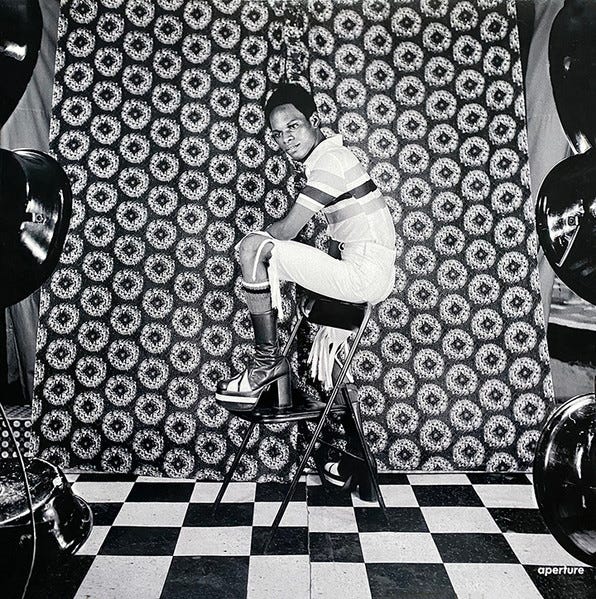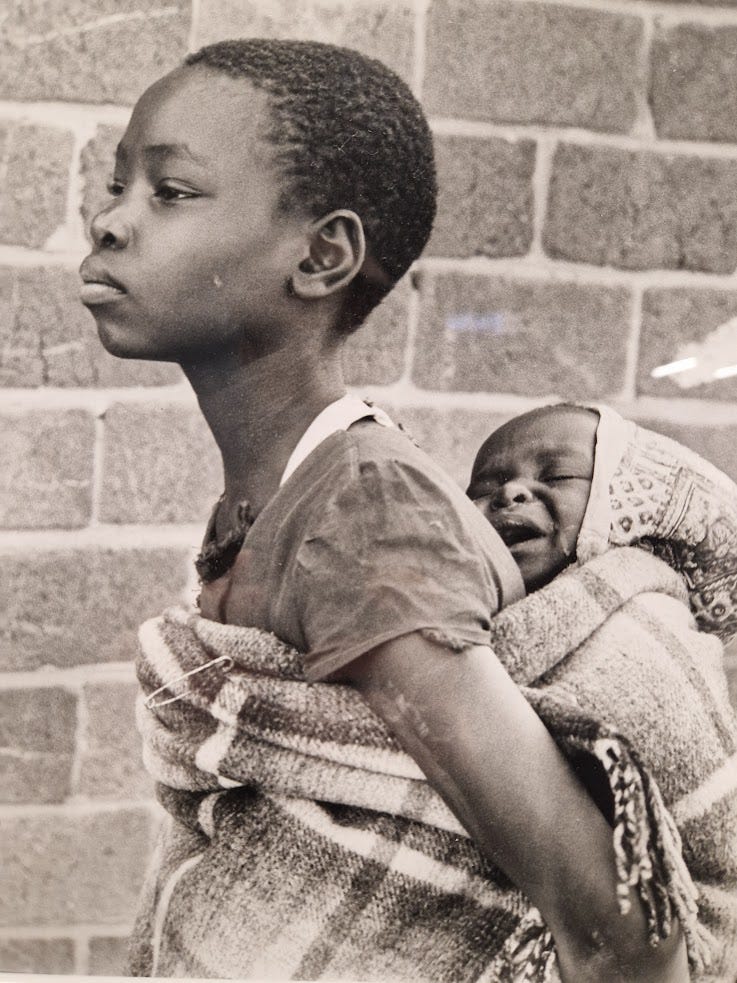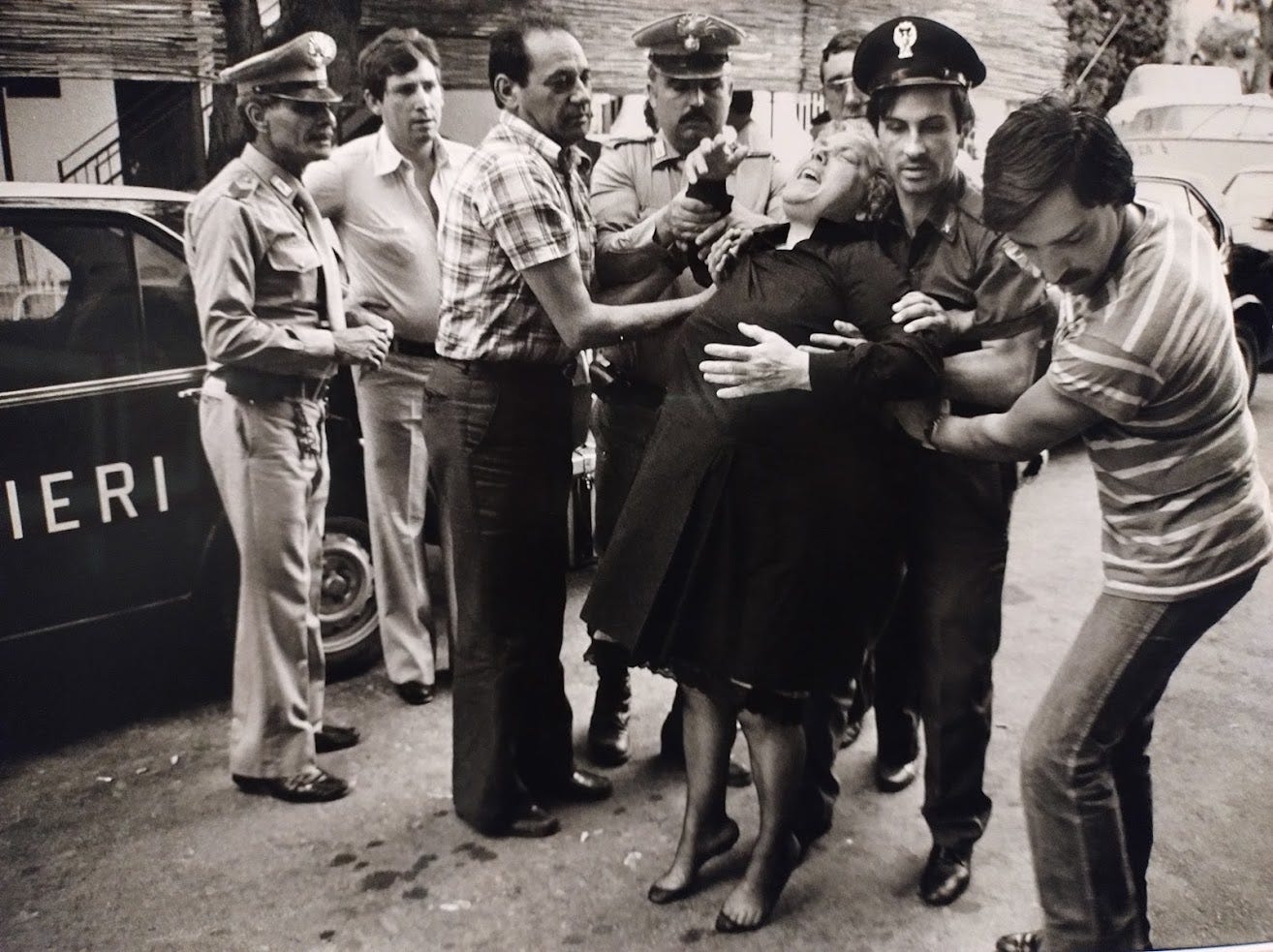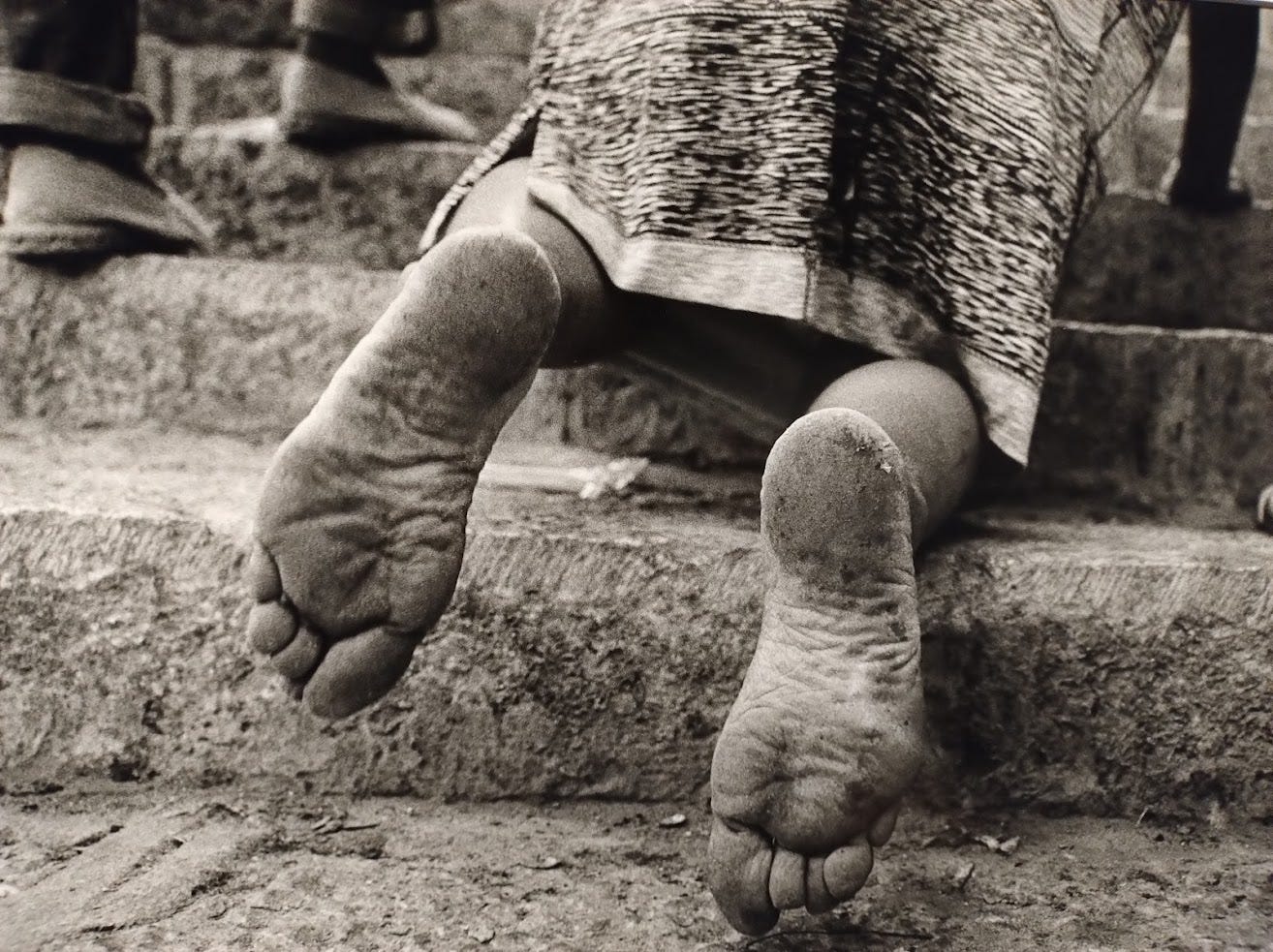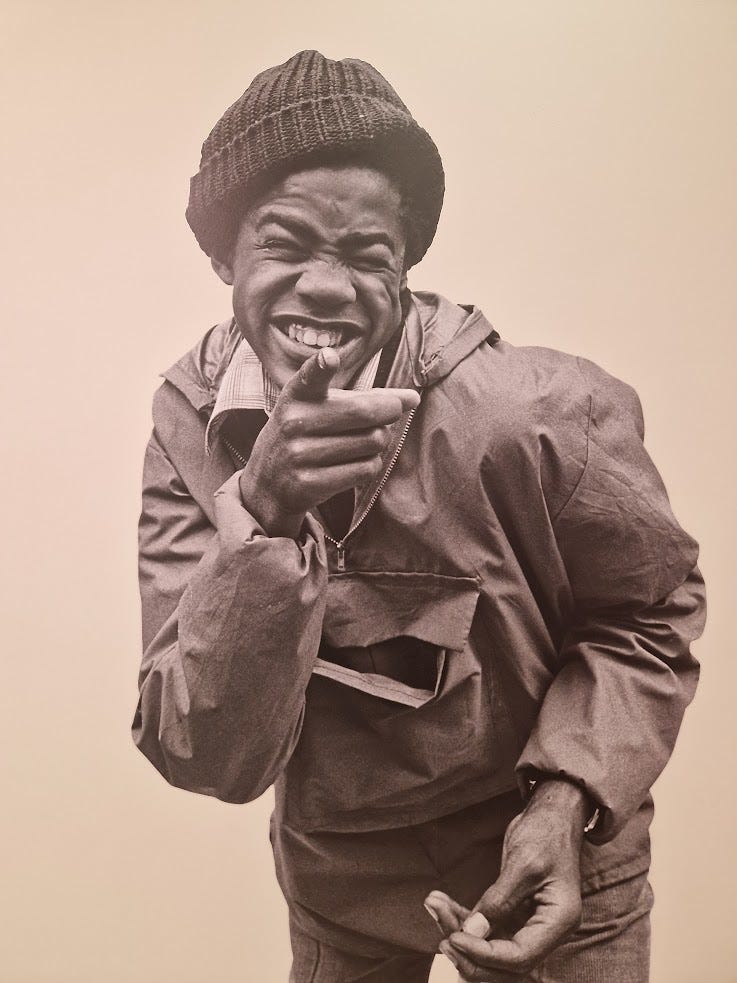AS WE RISE: PHOTOGRAPHY FROM THE BLACK ATLANTIC (+SICILY, SOUTH AFRICA, ‘80s BRITAIN & ELTON’S FRAGILE BEAUTY)
An Overview of Photography Exhibitions Across London
As We Rise at the Saatchi Gallery: spacious and beautiful, a gem of an exhibition.
Temperatures reached a high of three degrees in London today and dropped below zero as the sun set. Further north, well, the forecast is for some regions to reach minus twenty…. yeee, the midwinter blues. This noted, I’ve not seen any snow yet – the northern bit of north London had a dusting of snow last weekend, down in the south east we just got rained on – and everything continues to function in the orderly, slightly dazed, post-festive season process that ensures January is the quietest month of the year.
I headed out to East Croydon last Sunday to see an afternoon performance by QOW TRIO in the Oval Tavern. Seasoned Yak readers might recall I interviewed Spike Wells – QT’s drummer and an esteemed figure in British jazz – early last year. I’ve met and chatted with Spike several times but never before had the pleasure of seeing him play. And he drummed up a storm, absolutely fabulous. As were QT’s saxophonist and double bassist – if you enjoy Sonny Rollins-style powerhouse jazz then QOW will make you moo for more. Also: the Oval Tavern is a wonderful music pub with a superb variety of ales/dark beers and very reasonable prices. As far as my first gig of 2025 goes I couldn’t have had a more enjoyable experience.
This noted, its still very quiet here re live music. So I’ve kept myself busy by going to exhibitions – as with music venues, London’s also one of the world’s great cities for experiencing museums and galleries. Rather than simply list everything I’ve seen, I decided to focus on what fortuitously appears to be a plethora of photography exhibitions. Regular readers will be aware of my huge enthusiasm for photography and, as with QOW TRIO’s concert, my experiences of the best work on display across London replenished my soul, beat off the mid-winter blues.
What follows are my reflections on a great variety of photographic practises. Most of these exhibitions are still open to the public and are either free or – for the most part – very reasonably priced.
As We Rise has a standalone compilation LP accompanying the exhibition - a first for a photography exhibition, surely? No, I didn’t purchase a copy (too expensive at £45 for me).
AS WE RISE: PHOTOGRAPHY FROM THE BLACK ATLANTIC
Saatchi Gallery, Sloane Square (until 20 January)
As We Rise: Photography From The Black Atlantic gathers photographs from African diasporic culture. Organised by Aperture, the exhibition showcases work by Black artists from Canada, United States, Britain, the Caribbean, and Africa. It appears that the exhibition draws largely from works in the Wedge Collection, Canada’s largest privately-owned collection committed to championing Black artists, established by Dr. Kenneth Montague in 1997 (a Jamaican born dentist who, inspired as a child by seeing a photo from the 1930s of a wealthy, stylish Black couple, determined he would collect photos - he now owns the aforementioned historic image and exhibits it here).
The Saatchi Gallery is a beautiful space just off the Kings Road and As We Rise covers its upper floors. Spacious and meditative, As We Rise is a striking exhibition to stroll through. Some of the images on display I’m well familiar with – there’s a silver gelatin image of a young couple dancing almost forehead to forehead by Mali’s Malick Sidibé’s (1963 Nuit de Noel (Happy Club)) that is so graceful and loving it appears to hover as if a scene from a film – and work by such noted figures as Gordon Parks (the Memphis photographer who documented the city’s blues scene and the Civil Rights struggle) and Horace Ové (a pioneering Black British film maker).
The exhibition could easily draw on US and UK photographers but, wisely, draws from Black communities in many different locations. And the theme here is not Black suffering, more Black confidence – friendship, family, joy, vulnerability, strength, enjoyment, intelligence, community, identity. As you still have eleven days to see As We Rise I do recommend doing so – its an exhibition that celebrates humanity and is a joy to experience. If you’re not in London over the next ten days then there is a book accompanying the exhibition (which I believe is touring – so you may well get to see it in another city) and I highly recommend it.
Miners queuing for food: Ernest Cole.
ERNEST COLE: HOUSE OF BONDAGE – VINTAGE WORK FROM THE FAMILY TRUST – Goodman Gallery (Mayfair) (until 18 January)
The late Ernest Cole was a photographer I barely knew about a year ago. The resurrection of his work in London (and elsewhere – there’s a new documentary feature by Raoul Peck on Cole, so far unavailable in the UK) ensured I wrote about two separate exhibitions of the late South African photographer in the Yak over 2024. The first was at the Photographer’s Gallery in Soho and was a celebration of House Of Bondage, the 1967 photo book of apartheid South Africa that made Cole’s name and remains a bitter testament to how brutal the white rule government was towards its African majority. The second was at Autograph Gallery in Shoreditch and focused on The True America, a recent publication gathering the photography he made in the US – he managed to flee South Africa in 1966 and could never return once House of Bondage drew international opprobrium towards the apartheid regime – these photos (both colour and b&w – House Of Bondage was entirely b&w) are, at their best, a celebration of the dynamic confidence young African Americans expressed in the late ‘60s.
At the Goodman Gallery in Cork Street – literally right behind the Royal Academy of Arts – there is an exhibition of Cole’s photos. The Goodman is a large gallery and the exhibition covers both the ground floor and the basement. Part of the exhibition is titled Black Ingenuity and is apparently a discarded chapter from House Of Bondage. Here its photos of Black South Africans practising ballet and such – I imagine Cole correctly discarded these photos, knowing they would lessen his book’s raw power. Of the dozens of images on display at the Goodman – a gallery I am now aware is primarily based in Johannesburg and represents William Kentridge, the remarkable South African animator (alongside many other SA and international artists) – the most powerful here are of South African miners. These men, who had to graft in brutal conditions for a pittance, are secretly photographed (Cole had to ensure he was not caught by the SA authorities – they didn’t want the world to witness apartheid). Another series of photos is of people drinking the local booze that was sold at shanty shops, alcoholism being a pain killer that inevitably led to even greater suffering.
Cole took a lot of photos and, as I noted of The True America, plenty of them are only average. Which is also true of this exhibition: since his 60,000 negatives were rediscovered in a Swedish bank vault his estate – he died without a partner or children but there are family in SA – has got busy ensuring the world gets to see his work. Which is a good thing. Although it would be a better thing if they were stricter as to what got exhibited: there are too many average images here to make a case for Cole as one of the 20th Century’s great documentary photographers.
Comments on the wall accompanying some of the images note ruefully that the poverty and desperation Cole photographed continue some thirty years after apartheid was dismantled. That images of desperately poor people taken by a man who, due to mental illness, ended up homeless, are on display in Cork Street – where art galleries sell very blue chip artists – is an irony to ponder on.
Pure pain: death in Sicily.
LETIZIA BATTAGLIA: LIFE, LOVE AND DEATH IN SICILY – The Photographers’ Gallery, Soho (until 23 February)
You can walk from Cork Street to The Photographers’ Galley in around ten minutes and I recommend doing so as its worth seeing Ernest Cole and Letizia Battaglia in tandem, both being primarily b&w photographers who were determined to document their communities. I must admit to being unaware of Battaglia prior to this excellent exhibition, the first major exhibition in the UK following her death in 2022.
Born in Palermo, Sicily in 1935, Battaglia began her photographic career in the early 1970s, when she was in her forties. She documented everyday life, alongside the brutal reality of the Mafia and their victims in Sicily during the 1970s, 1980s and early 1990s. Her images are some of the best-known records of life in the shadow of the Mafia. In her relentless pursuit against organised crime, she used her camera to document the daily terror, putting it on the front page. Reporting for the daily newspaper L’Ora, she or one of her colleagues, was present at every major crime scene in the city over two decades. Battaglia mainly photographed in black and white. She also captured daily life: women and children in their neighbourhoods and streets, showing the wealth of the area and at the same time the misery of a city almost abandoned to its fate. Her pictures capture the poverty on the streets as well as the life of the upper classes, religious processions, festivals, funerals, sun lovers on the beach and more. The exhibition’s focus on her Mafia images is sure to attract visitors who might not otherwise consider going to a photography gallery and ensures a dark, sombre mood – the opposite of As We Rise’s sense of optimism and love. To think she took these photos for a local newspaper made me reflect on how our digital age has largely destroyed that media – and how we are all poorer for the decimation.
The feet of a pilgrim: Caravaggio and Battaglia shared an interest in both the sole and the soul of their subjects.
Battaglia was seemingly fearless – when the Mafia sent her a note threatening her if she continued to document their wretched selves she refused to leave Sicily, instead becoming a local councillor for the Green Party – and possessed not only determination but a fine eye: she often had to shoot her images quickly (as its a police incident or grief stricken relatives: you can’t ask your subjects to wait while you work out the best angle) but her images are often striking. I imagine this came both from years of practise and an awareness of not just master photographers but old master paintings: the deep shadows that engulf many of his images recall Caravaggio – who worked in Sicily centuries prior – and share with his work a sense of grim fatality and the intense drama that can consume ordinary people. I loved Sicily when I visited it many years ago, specifically Palermo, and hope to return one day. I will aim to study Battaglia’s images when I return so to get a real sense of the streets she once strode.
This striking self-portrait (see how he’s pressing the button) of an unidentified youth is The 80s emblem.





